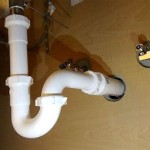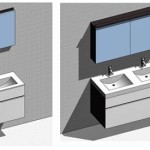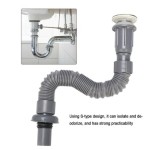Essential Aspects of Changing a Bathroom Sink Drain
Maintenance of a bathroom is essential for the upkeep of hygiene and sanitation. Changing a bathroom sink drain is a relatively simple task that can be easily completed with the right tools and knowledge. This article explores the critical aspects of changing a bathroom sink drain, providing a thorough guide to ensure successful completion of the process.
Understanding the Function of a Sink Drain
To effectively change a sink drain, you must first understand its function. The sink drain allows water to pass through the sink and into the plumbing system while preventing hair, soap scum, and other debris from clogging the pipes. Essential components of a sink drain include a drain stopper, gasket, strainer, and tailpipe.
Tools and Materials Required
Before beginning the task, gather the necessary tools and materials: Adjustable wrench, pliers, bucket, flashlight, drain cleaner (optional), new drain assembly, plumber's putty, and rags.
Removing the Old Drain Assembly
Start by placing a bucket under the sink to catch any dripping water. Use the flashlight to illuminate the underside of the sink and locate the drain assembly. Using the adjustable wrench or pliers, loosen the slip nut that connects the tailpipe to the drainpipe. Remove the tailpipe and then unscrew the mounting nuts that hold the drain assembly in place. Carefully lift the old drain assembly out of the sink.
Preparing the New Drain Assembly
Before installing the new drain assembly, apply a thin bead of plumber's putty around the base of the flange. Position the new drain assembly in the sink drain hole and hand-tighten the mounting nuts. Use the adjustable wrench to further tighten the nuts, ensuring not to overtighten.
Installing the New Drain Assembly
Connect the tailpipe to the drainpipe and hand-tighten the slip nut. Use the adjustable wrench or pliers to tighten the slip nut firmly. Check for any leaks by turning on the water and observing the connections. If any leaks are present, tighten the fittings further.
Installing the Drain Stopper
Place the gasket onto the drain stopper and insert it into the drain assembly. Push down on the stopper to engage the gasket and prevent leaks. If desired, install the strainer over the drain stopper.
Resetting the Pop-Up Mechanism
If the sink drain has a pop-up mechanism, it may need to be reset after changing the drain assembly. Insert the pliers into the hole in the top of the drain assembly and pull up on the linkage to engage the pop-up mechanism.
Conclusion
Changing a bathroom sink drain is a straightforward process that can be completed with minimal effort. By following the steps outlined in this article and understanding the essential aspects of the task, you can effectively replace a faulty drain assembly and restore proper functioning to your bathroom sink.

How To Replace A Rusty Sink Drain Howtolou Com

How To Replace A Bathroom Sink Drain

How To Replace A Rusty Sink Drain Howtolou Com

Bathroom Sink Popup And Stopper Problems

How To Replace A Sink Stopper Quick And Simple Home Repair

New Bathroom Sink Drain Leaks At Threads

How To Remove And Replace A Bathroom Sink Diy

How To Unclog A Bathroom Sink Hana S Happy Home

Bathroom Sink Plumbing Installation

Replace A Trap And Add Cleanout Fine Homebuilding
Related Posts







